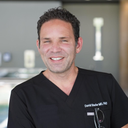I had upper and lower Blepharoplasty a year ago with a lot of complications. I have very sensitive skin. The stitches did not dissolve and I had a hard time healing from the TCA chemical peel done afterwards. It has been a year since the surgery and my one eye looks as if I did not even have anything done to it. The lower lids are very puffy again. My plastic surgeon has been trying many things to get the skin to tighten but so far nothing has worked. I am considering having him do a revision and this time removing some extra skin. I paid for something and I am still waiting for the results. He does not want to do another TCA because it took so long to heal the first time. He has been doing some kind of skin tightening now for over 5 months with no results yet. I am having my last one done on Wednesday then we go back to the drawing table. What do I do as a patient? Is there something I should be asking from my surgeon? I am dark skinned Hispanic and I freckle and scar easily.
Answers (12)
From board-certified doctors and trusted medical professionals
More Eyelid Surgery Questions
See all Eyelid Surgery Q&AWE SEND PRETTY
EMAILS
What’s trending? Who’s turning heads? Which TikTok myths need busting? We’ve got you. No fluff, no gatekeeping—just real talk. Get our free, unfiltered newsletter.




